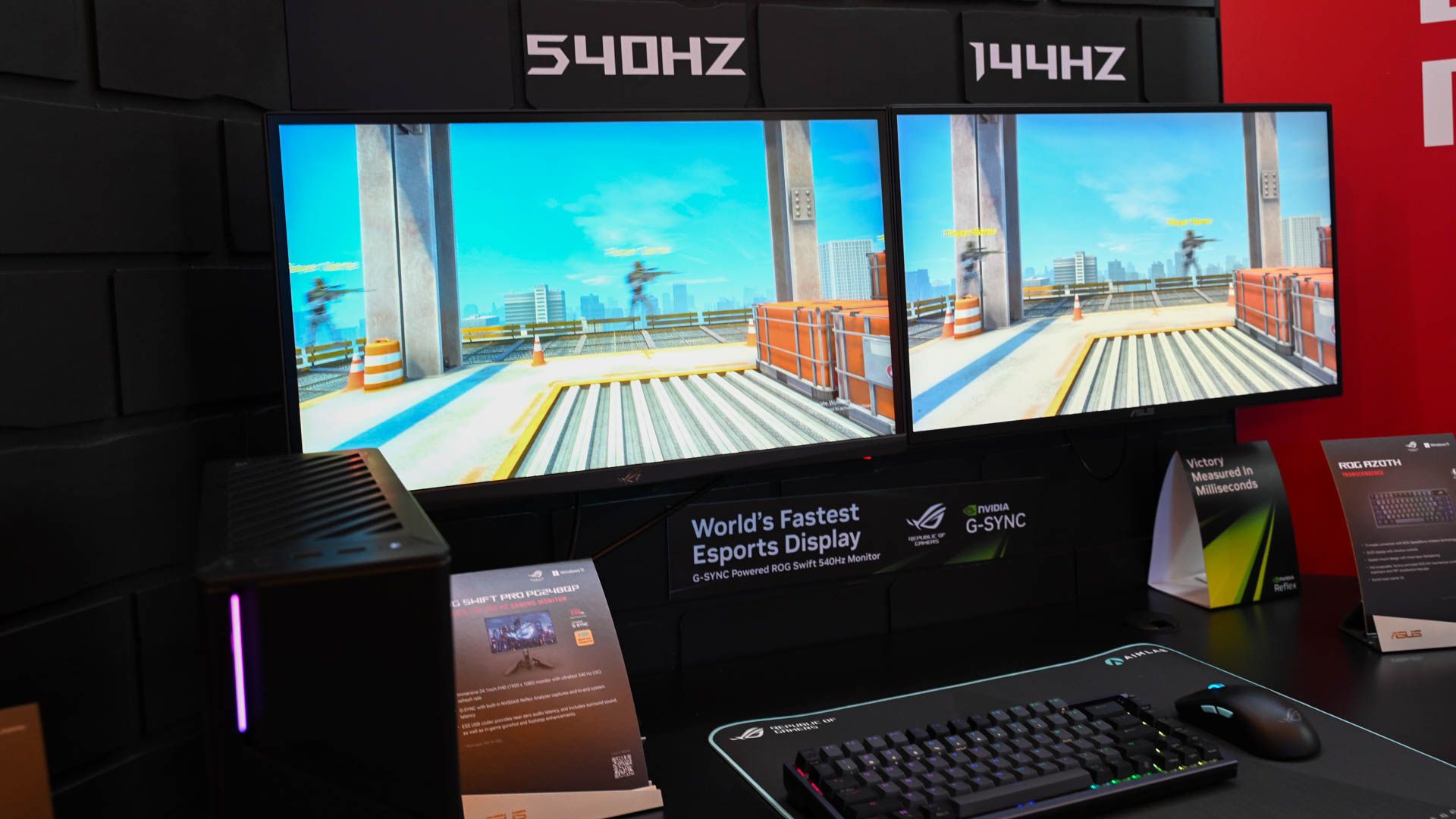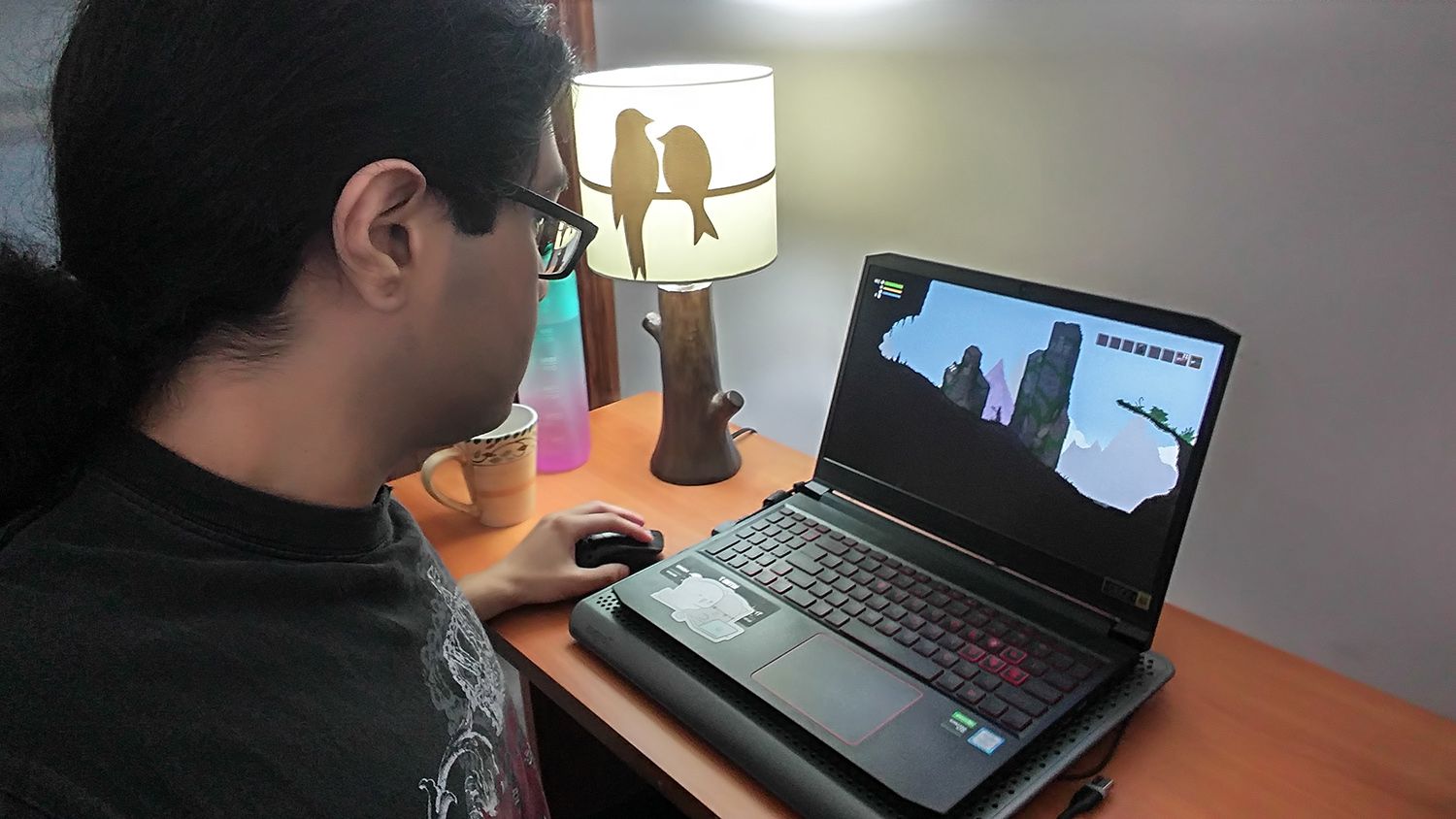Quick Links
Key Takeaways
In the end, for competitive gaming needs, it's worth getting a monitor with a refresh rate higher than 60Hz—the higher the better. You'll begin to get diminishing returns past 144Hz, however, the only way to know for sure is to try out the monitor with the highest refresh rate that you can find!
How many FPS can the human eye see? That's a tough question because the human eye doesn't really see in "frames per second," and everyone's eyes are different. We'll talk about the biology, but the real question is what the upper limit is when it comes to FPS on monitors. At what point do you stop noticing FPS increases?
The Highest FPS That Humans Can See
First and foremost, humans do not see in frames per second (FPS); FPS is how a monitor displays images. When we see these images, our eyes are absorbing the light, and our brains make sense of what we're seeing. We mentally combine multiple quickly-displayed images and interpret them as continuous motion.
Let's use Hertz (Hz) as the unit of measure to discuss this topic. 1Hz is one cycle per second. Although 1Hz and 1 FPS both use one second of time, they are not exactly equivalent. Hertz measures your monitor's refresh rate, and FPS is how many frames the GPU of your device (like a console) puts out per second.
In a study conducted to test the limits of human eyes, researchers found that the exact cycles per second that people can visually track vary a lot. A maximum of 60Hz to 90Hz is often reported, but under the right conditions, the test subjects were able to perceive things at up to 500Hz. However, this was under specific conditions and does not emulate what it's like when you're gaming or watching a movie.
Next, let's briefly look at how monitors display images. The light produced from artificial sources is not as consistent as it seems. The display of monitors---despite seeming consistent---is actually multiple cycles of light being produced at a fast enough rate that we don't usually notice it.
All of our eyes are built with the same layout and components, but some aspects differ. Though, more on that later.
This is most important when playing video games, as they are active media---you interact with what's happening. Being able to visually process and react to things on your monitor is crucial. This fact is not as important when watching movies and TV shows, as they are passive media---you're only observing what's happening and don't need to interact with things unfolding on screen.
How Human Eyes Perceive Light
There are two types of photoreceptors in our eyes: rods and cones. Rods are responsible for our low-light vision and cones deal with our high-light vision (and color vision). Every person on the planet has different numbers of rods, cones, and their subtypes (red, green, and blue cones). As such, how everyone sees the world (including digital worlds displayed on monitors) can vary greatly.
When you look at a monitor, your eyes are taking in light that's being produced by the monitor. Depending on how many rods and cones you have (as well as their subtype distribution), you may be able to notice visual changes more easily than others.
Can Human Eyes See Above 90Hz?
In certain situations, yes, human eyes can potentially see details at rates faster than 90Hz#4. Going back to that study we mentioned earlier, researchers found that---under the right conditions---humans can see up to 500Hz.
Now, this is in a setting where the images displayed on the test monitor were very simple: high-contrast images with extremely sharp outlines. The researchers were trying to see how well human eyes can detect the most obvious visual changes on a monitor, so they made it as easy as possible for the test subjects to notice different frames on the test monitor.
For this reason, you're unlikely to be able to track images moving at 500Hz when gaming. It's not impossible, but it is unlikely. There's simply too much visual information for your eyes and brain to register everything---especially when you're interacting and reacting to things occurring on screen. Furthermore, the images shown on your gaming monitor will never be as high-contrast with the severely sharp edges used in the above-mentioned study. Most games simply wouldn't look very nice if they were designed like that.
Is it Worth It to Get a 144Hz or 240Hz Monitor?
If you're really into gaming (and have the money for it), it's definitely worth getting a 144Hz or 240Hz monitor. While 60Hz is enough to display most games fairly well, you'll need more than this for a competitive edge in multiplayer games.
Since most peoples' eyes can track moving images up to 90Hz (or more in some cases), you should at least get a 144Hz monitor for your hardcore competitive gaming needs. This will allow you to react more quickly to incoming threats. Plus, the increased smoothness of the animations looks great! These points are especially true when going from a 60Hz monitor to a 144Hz monitor; the difference is like day and night.
However, going from a 144Hz monitor to a 240Hz monitor (or one with an even higher refresh rate) will be less noticeable. There's definitely a difference, but your eyes and brain won't notice them as much. There's going to be a more accurate representation of the gameplay unfolding on screen and there will be less input lag. With that said, above 144Hz, you'll begin to get diminishing returns on how much you notice the higher FPS.
Go try out some high refresh rate monitors and experience the difference yourself: it's the only way you'll know for sure!
When it comes to gaming monitors: the higher the FPS, the better. Although, at the end of the day, how much of a competitive edge you need depends on the games you play, who you play with, and what your budget is for a monitor setup.



